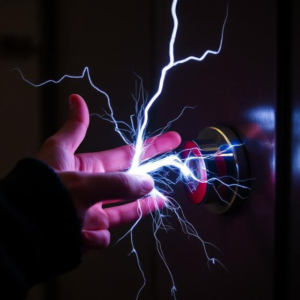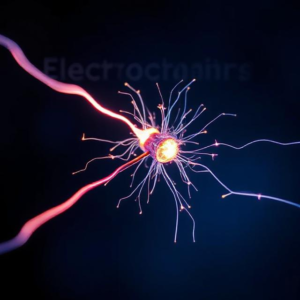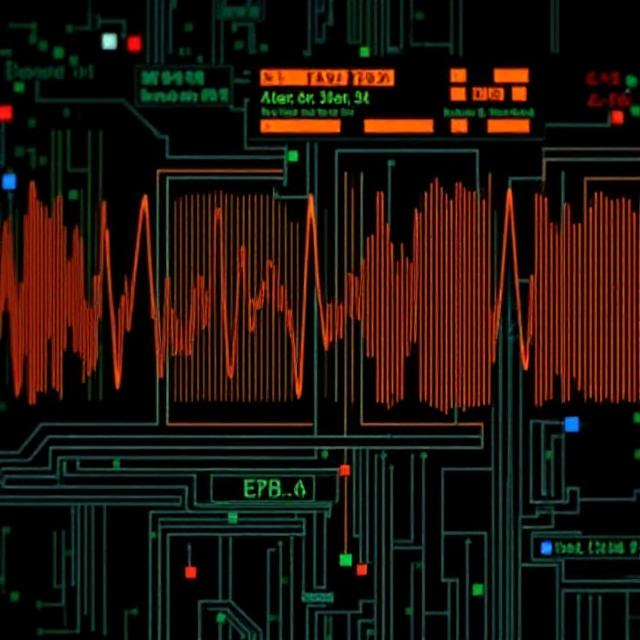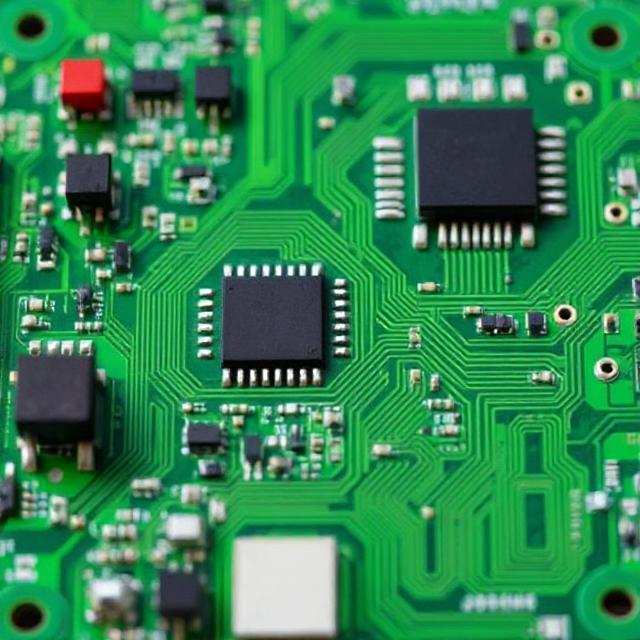What is Electrostatic Discharge (ESD)?
Electrostatic Discharge (ESD) happens when there’s a sudden flow of electricity between two objects with different electrical charges. This usually occurs when you touch something, like a metal doorknob, after walking across a carpet and building up static electricity in your body.
In everyday life, you might have felt a small shock when touching a doorknob or another person. That’s an example of ESD.

Why Is ESD a Problem?
Electronics like computers, smartphones, and circuit boards are made up of very sensitive components. These components are so small that even a tiny amount of electrical charge can damage them permanently. When ESD happens, it can:
- Damage components like microchips, transistors, or connectors.
- Cause malfunctioning of circuits or devices.
- Shorten the lifespan of electronic devices.
How Can We Protect Against ESD?
To prevent ESD from damaging electronics, ESD protection is used. This involves techniques and devices designed to redirect or absorb electrical charges safely, without allowing them to reach sensitive parts of the device. Here are some common ways to protect against ESD:
1. ESD Wrist Straps
- These are special bands that you wear on your wrist, which are connected to a grounded surface (like a metal table or the ground of the building).
- When you work on electronics, the wrist strap helps discharge any static electricity safely from your body, preventing it from reaching the sensitive components.
2. ESD Mats
- An ESD mat is a special type of mat that is used on workbenches where electronics are assembled or repaired.
- It helps absorb and redirect static charges away from the components you’re working with. The mat is grounded, so any buildup of static charge is safely transferred to the ground.
3. ESD-Safe Packaging
- When electronic components are shipped, they are often packed in special antistatic bags or containers. These bags prevent static buildup by safely discharging any charge before it reaches the electronics inside.
- You’ll notice some parts come in pink or silver bags, which are designed to protect the parts from ESD during shipping and storage.
4. ESD Protection Components (Devices)
- There are specific electronic components designed to protect against ESD damage. These are added to circuits during design and help safely absorb or redirect ESD before it reaches sensitive parts.
- TVS Diodes (Transient Voltage Suppressors): These devices are used to clamp the voltage from an ESD event to a safe level.
- Zener Diodes: These diodes can also be used to limit the voltage that reaches sensitive parts of the circuit.
- Capacitors: In some cases, capacitors can absorb and dissipate the energy from an ESD event.
5. Grounding
- Grounding is an important method of controlling ESD. By connecting parts of the system to a ground, any extra electrical charge can safely be sent away from sensitive areas.
- For example, a metal frame of a computer or device might be connected to a ground to prevent static buildup.
6. Proper Handling Procedures
- Careful handling of electronic components is crucial. Technicians and engineers working with electronics are often trained to handle parts by the edges (to avoid touching sensitive areas) and to avoid generating static in the first place.
- They might also work in ESD-protected areas, where the floor, equipment, and tools are all designed to minimize static charge buildup.
7. Air Ionizers
- In places where a lot of sensitive components are handled, ionizers can be used. These devices release positive and negative ions into the air, which helps neutralize static charges on surfaces and people, reducing the chance of ESD.
How Does ESD Protection Work?
The goal of ESD protection is to ensure that when static electricity is discharged, it doesn’t reach the sensitive parts of the circuit. Here’s how protection works:
- Redirecting the Charge: ESD protection devices like diodes or capacitors redirect the electrical charge away from the components into a safe pathway, like the ground.
- Absorbing the Charge: Some devices can absorb the electrical charge and convert it into harmless energy, preventing it from damaging delicate components.
- Preventing Build-Up: Methods like grounding, wrist straps, and air ionizers prevent static from building up in the first place.
Why Is ESD Protection Important?
Without ESD protection, even something as simple as touching an electronic component with static electricity from your body can cause permanent damage. ESD protection ensures:
- Safe operation of electronics, especially in sensitive areas like microchips and memory.
- Longer lifespan of electronic devices.
- Reduced repair costs by preventing damage before it happens.
In Summary
- Electrostatic Discharge (ESD) is a sudden flow of static electricity that can damage electronic components.
- ESD Protection includes methods like wrist straps, ESD mats, special packaging, and electronic devices (like diodes) designed to absorb or redirect the charge.
- The goal is to prevent ESD damage and ensure electronics function properly without the risk of malfunction or failure.
So, in simple terms, ESD protection is like a shield that prevents the invisible forces of static electricity from harming your electronics, helping your devices stay safe, reliable, and long-lasting.











